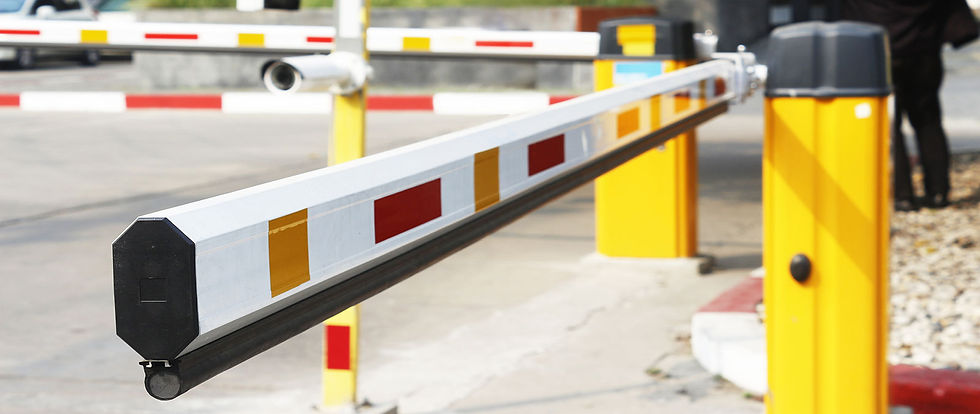How Does Biometrics Improve Security
- Tyler Zemantic
- Jul 11, 2023
- 4 min read
Updated: Dec 19, 2024
At Spade Security Solutions, we specialize in supplying and installing security systems, mostly for commercial properties. To that end, it’s our job to find ways to utilize the latest and most advanced new technologies in order to deliver the most effective protections for our clients. One such technology that is rapidly gaining ground in the commercial sector is biometrics, and it also happens to be one we are most commonly asked about.
In this article, we’ll explain the particulars of biometrics and security, including the different forms biometric technology can take and how it can be used to improve the overall safety of your organization. This, in turn, will help you make an informed decision about how best to take advantage of this rapidly advancing technology.

Biometrics: What It Is and How It Works
In the simplest terms, the purpose of a security system is to limit access to a given area to certain authorized individuals. Of course, this is a very broad definition: even a locked door is a type of security system. Individuals who are authorized to open that door are issued keys, which work only on the specific locks they are designed for. They may also use other methods of entry, such as passwords or key cards.
In any of these cases, it’s these unique items that are needed to grant access. However, keys and keycards can be lost or stolen, and passwords can be leaked or hacked. This makes them fairly flawed when it comes to providing security, but the basic concept is sound: authorized individuals must have a unique way of gaining entry that those who are not authorized do not have.
Biometrics takes this most basic of security concepts to the next level. Each individual person has certain physical or behavioral markers that are unique to them and that are very difficult to steal or fake. These include their fingerprints, the retinas of their eyes, or even the structures of their faces. Biometric security systems can detect these unique markers to determine if an individual is authorized and should be granted access to an area.
The Different Types of Biometric Technology
Chances are, if you’re reading this, you are already familiar with some of the more pervasive types of biometric technology since it’s already becoming ubiquitous throughout the world. One of the most common nowadays is fingerprint scanning. This one is used in a number of smartphones in order to grant access. Each person has different ridges and valleys on each finger, which are unique to them. Biometric technology that scans fingerprints can read these markers and detect which individual they belong to using mathematical algorithms.
Besides fingerprints, each individual has a unique set of patterns in the blood vessels in the retinas of their eyes. With a harmless beam of infrared light, a retinal scanner can detect these blood vessel patterns and compare them with the database of their online security systems. The security system can then determine if the individual is authorized to enter.
Facial recognition software works in a similar manner: it utilizes a neural network to analyze the minute details in the measurements of an individual’s face. It then uses this information to determine whether to grant a person access to a secured area. Voice recognition is another related type of biometric technology, as it can recognize the unique pitch and rhythm of a person’s voice to grant them access.
There are plenty of other unique markers that can be used for biometrics and security, such as dental patterns or even DNA recognition. A combination of several can also be used for especially high-security applications. For most properties, however, the methods we’ve mentioned above will suffice.
How Biometrics Makes Areas More Secure
Biometrics has several benefits for improving security over other, less advanced methods. As we’ve mentioned above, there is no physical material to be lost or stolen, such as a key or key card. Passwords can be leaked and stolen as well, and advanced computers can even crack them by simply guessing every possible combination of characters to brute force their way into a system.
Biometrics is a great deal faster than other methods as well. For an authorized individual to enter an area that is secured with facial recognition, they need only to look directly at the scanners. This saves a great deal of time that would otherwise be spent fumbling for a key card or trying to remember a password. In many commercial applications, this time can be critical for the operation of an organization.
Biometrics can also benefit an organization by preventing the need for rekeying doors and issuing new passwords to every employee. A person’s biometric markers do not change over time, and they will remain just as difficult to fake as long as the authorized individual is employed by your organization. It’s also a simple matter to add new individuals or remove them as their authorization changes, depending on the need.
If You Have Further Questions
If you think that implementing biometric technology sounds like a good choice for your organization, contact us We are a full-service security company, meaning that we don’t just provide materials; we perform installation as well. This means that we’ll be able to help customize your security system for your specific business needs and the needs of the area or areas that need to be secured.
The manufacturers of these advanced security technologies will only sell their products to authorized vendors, and we are the number one preferred vendor for the manufacturers of security technologies. We provide the best and most advanced security systems for commercial enterprises all across the United States, Canada, and Mexico, so if you have a need for a new biometric security system, contact us today.




Comments